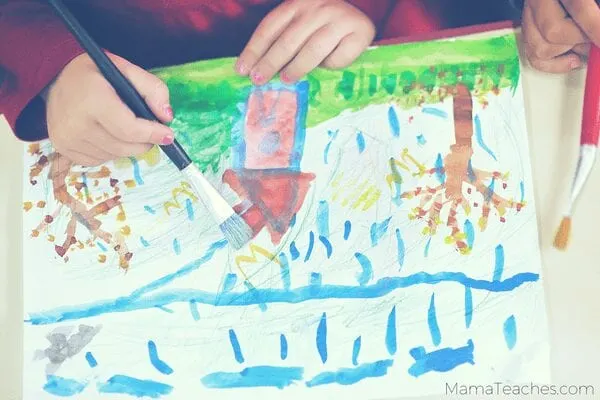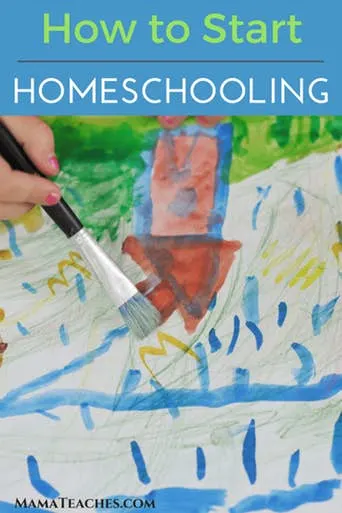Getting started with homeschooling doesn’t have to be intimidating!
Here are three steps to take to make it easy.

This article contains affiliate links to things that you might like.
Once you make the decision that homeschool is the right thing for you, your children, and your family, it can be daunting knowing where and how to get started.
In fact, the process of getting started is almost as challenging as the decision to do it in the first place.
Don’t worry.
I’ve been there, done that, and know that it can be done.
Here are three steps to getting started that you will want to follow as you embark on this wonderful, exciting, crazy adventure called homeschooling.
Homeschooling – Getting Started in 3 Steps
1. LEARN THE LAW
This is the most important step.
Homeschooling laws vary from state to state, so it’s vitally important to know what’s expected where you live.
Do your research.
Check out your state’s Department of Education page to read the homeschool laws.
Know when you have to file your paperwork and what paperwork you have to file.
Do your research.
I can’t stress that enough.
If you’re homeschooling a child with special needs and an IEP, it’s especially important to understand how the state wants you to report learning.
Even if the only thing on the IEP are goals for social skills, you still need to follow the protocol your state has for homeschooling students with special needs.
Talk with other homeschoolers in your area and ask questions.
They will usually be more than happy to help you and get you on the right path.
If you’re in Pennsylvania like we are, here are some places to start.
2. CURRICULUM
Ah, curriculum.
There are so many options out there that it’s confusing for anyone, let alone a new homeschool family.
My advice would be to decide which approach you think will work best for your child and whether or not you want your curriculum to be faith-based on not.
For my children, we take an eclectic approach.
We do online classes through CurrClick LIVE, unit studies of books (Magic Treehouse for the 1st grader and Harry Potter for the 5th grader this year), a lot of hands-on learning, science experiments, cooking time, traveling the world for history and geography through Google maps, etc.
We’ve always made our own curriculum up, because that’s what works for us.
This is what we’ve done before to give you an idea.
You might want to check out Cathy Duffy’s 101 Top Picks for Homeschool Curriculum for ideas about what would work for your family.
Don’t be afraid to blaze your own trail if that’s where you feel led (aka Hackschooling), but also don’t be afraid to try Classical Education and stricter curriculums.
There is no right and wrong, because it’s all about what works for your children.
Always.
Don’t let anyone tell you differently.
3. MATERIALS AND SUPPLIES
Before rushing out to purchase supplies and materials, take stock of what you currently have in the house.
Manipulatives, crayons, scissors, glue sticks, magnifying glasses, computers…all of those things that you might possibly use that you have on hand should be inventoried.
Or at least put into a “Homeschool Stuff” basket for the time being.
It’s easier to make use of and organize the things you have instead of purchasing a ton of new things.
If there are things that you’re missing, shop some of the back to school sales.
Your budget will thank you!
As veteran homeschooling mamas will tell you, don’t worry about having “official” manipulatives – beans and M&Ms work great as math counters and the latter is a fantastic motivator.
A walk to the park to observe ants with a small magnifying glass is going to be a better science tool than a 3-D replica of an ant any day!

After you have all of the supplies and materials out, decide how you’ll organize them.
If you have a bookcase, you may want to devote a shelf or two to those supplies.
A three-drawer organizer or even some baskets with labels are fine.
Just don’t forget to think about how your children will be accessing the supplies and if it’s going to prevent a lot of hassle by having lids on containers.
For markers and crayons especially, those locking lid containers are a lifesaver in our house.
Getting everything together, labeling the containers, and putting them at an easy to access height is going to make you feel so much better about your space.
Here are some more tips for organizing your homeschool space.
With the knowledge of the law, the curriculum decisions made, and the supplies organized, you’re ready to start your homeschool journey off on the right food.
Don’t worry if you get a bit off track or need some guidance.
We all do – no matter how long we’ve been homeschooling. Reach out, ask questions, and don’t panic.
We’re all in this together and you will be just fine.
I promise.
